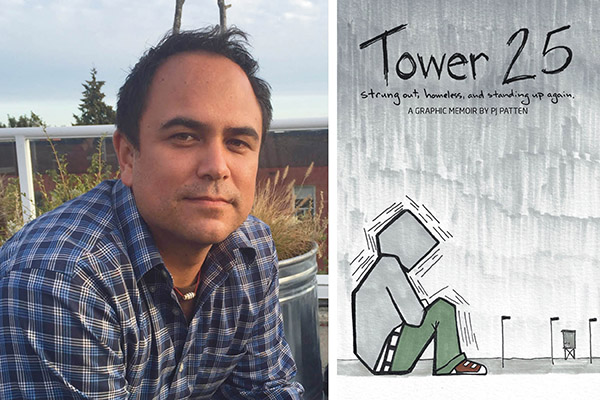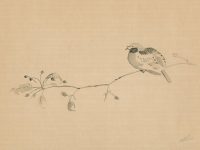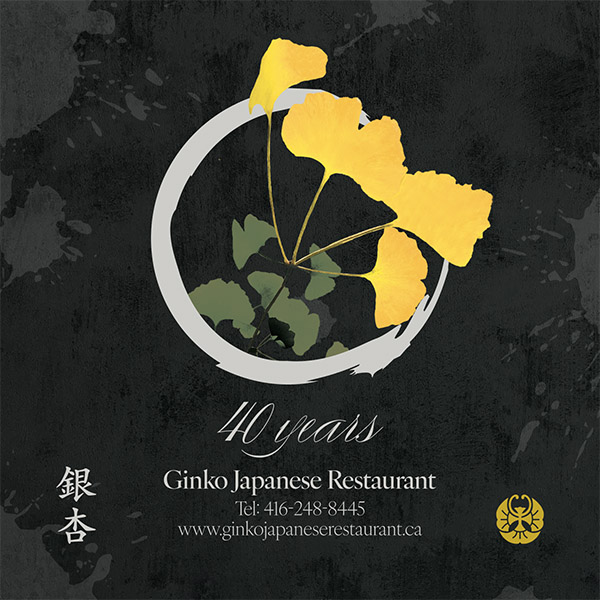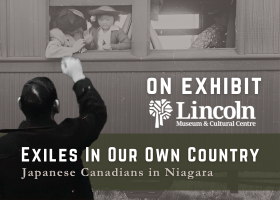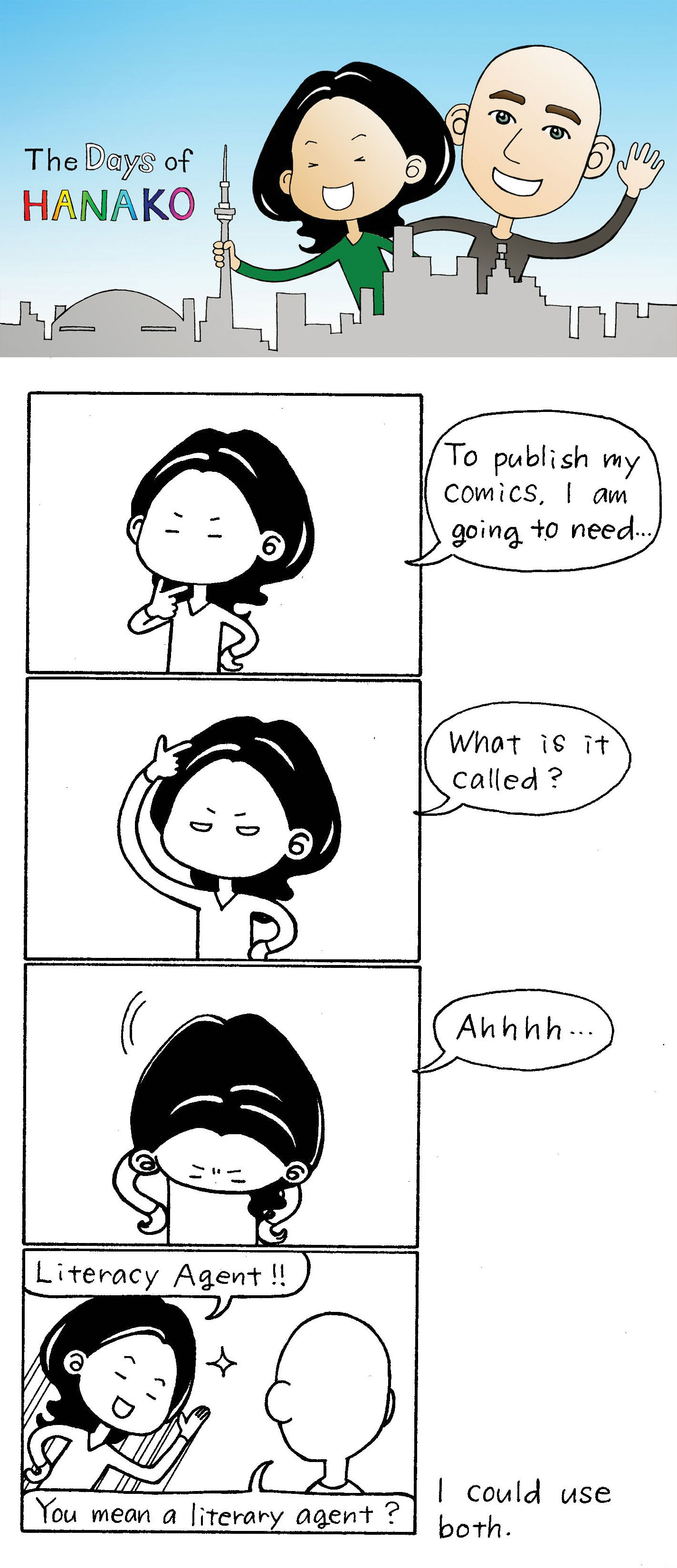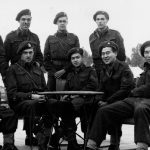Author and artist PJ Murashige Patten uses art to process his experiences of the world. Left: Author and artist PJ Murashige Patten. Photo credit: Eden Patten. Right: The cover of Patten’s graphic memoir Tower25. Photo courtesy: PJ Patten.
NEW WESTMINSTER — Multi-media artist and author PJ Murashige Patten had always turned to art and creation as an outlet for processing his experiences of the world—the good and the bad. So when it came time for Patten to examine a particularly tragic period in his life, it was only natural for him to turn to writing and drawing.
Patten’s graphic novel memoir, Tower25: Strung out, homeless, and standing up again, was published by B.C.’s Cloudscape Comics in 2021, after initially being released as a webcomic. The story details a period in the Japanese American artist’s life when he was deeply mired in addiction and homelessness in Southern California.
It is a story that contrasts starkly with the life of the man who worked his way out of these circumstances to become a professional artist, husband, and stepfather (and freshly minted Canadian citizen!), happily living and creating in New Westminster, B.C. In many ways that is exactly the point of Tower25, said Patten in an interview with Nikkei Voice.
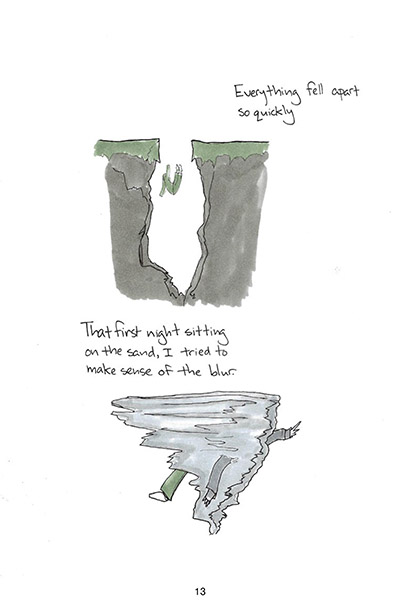
An excerpt from Tower25. Photo courtesy: PJ Patten.
“This is a story about how people suffer, you know, and how quickly you can go wrong.”
By sharing his own story, Patten hoped to help others reflect on, and directly challenge, the societal stigma around who addicts are and how homelessness happens.
Born in Fussa, Japan to an American Marine Corps father and a Japanese mother, Patten and his siblings were raised in El Toro, California, where his family moved shortly after Patten’s birth. Growing up in the 1980s as a child of mixed heritage was challenging, Patten said, particularly given the culture clash between his “drill sergeant father” and “traditional Japanese mother.”
“I didn’t really fit into much, and so art also was always kind of like my go-to to feel okay,” Patten said. “I was always that nerdy kid in class drawing in the corner.”
After his parents divorced when he was 15, Patten descended into a debilitating drug addiction that left him living on the street for seven months at 25, destitute and struggling to survive. Like most addicts, Patten had tried to kick his drug addictions in the past, but coping with the isolation and loneliness of his homelessness made getting clean even more difficult.
It wasn’t until Patten was offered an opportunity to join a Tibetan Buddhist temple to live and work as an artist that he finally found the safety, sanctuary, and acceptance he needed to finally begin to heal from his trauma and addiction.
“I went straight from being homeless to living at a Buddhist temple for 10 years, then living at a retreat center for nine months in B.C., before meeting my wife and joining the secular life.”
Supported and settling into his new life in B.C., Patten knew it was finally time for him to process the loneliness and isolation he experienced as an addict and being homeless, and art would once again be his tool.
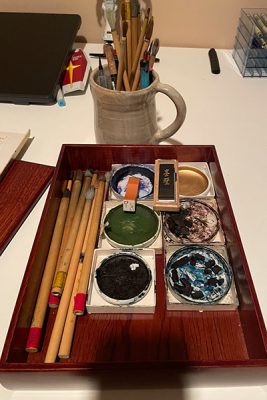
Patten’s Obachan’s brushes, which he used to create the art in Tower25. Photo courtesy: PJ Patten.
Tower25 was developed with a style of artwork deeply influenced by that of his Japanese grandparents. Patten’s Obachan, who turns 99 in August, was an artist and painter before losing her sight, and his Ojichan had been a literature teacher and a haiku poet.
Inspired by haiga, a style of Japanese poetry that blends watercolour painting and haiku, Patten created individual pages which were then organized and assembled to form the graphic novel. Patten shared that he used the inkstone and brushes that belonged to his Obachan to create illustrations that reflected specific moments, memories, and thoughts he experienced while homeless.
The main character in the book is faceless, a decision that Patten made deliberately to encourage readers to get involved in the story, to personalize it to themselves.
“[It] was so people could either see themselves or to see someone they know,” Patten said. “It was to give people the chance to create the person that everybody knows, or sees on the street.”
Since completing Tower25, Patten has continued to lean into art—drawing, painting, tattooing, writing—to reflect on what he sees in the world today, and to express his hope for the future, one where there is tolerance, kindness and acceptance by, and for, all human beings. He has led graphic novel workshops for at-risk youth and given talks on comics and his own recovery story and uses his various platforms to advocate for those who may not be able to advocate for themselves.
More than a memoir about Patten’s own personal journey through addiction and homelessness, Tower25 serves as his open invitation to readers to consider the depths of suffering—mental, emotional, and physical—that addicts, the homeless and people who are marginalized experience.
“I know that topics such as addiction and homelessness can be quite polarizing,” said Patten. “We fear what we don’t understand,” said Patten, “and so I hope that this book will help some other people understand what it is like to be in that situation.”
***
To learn more about PJ Murashige Patten, visit www.pjpattenart.com.
View this post on Instagram







 15 Aug 2023
15 Aug 2023
 Posted by Andrea Sakiyama Kennedy
Posted by Andrea Sakiyama Kennedy 